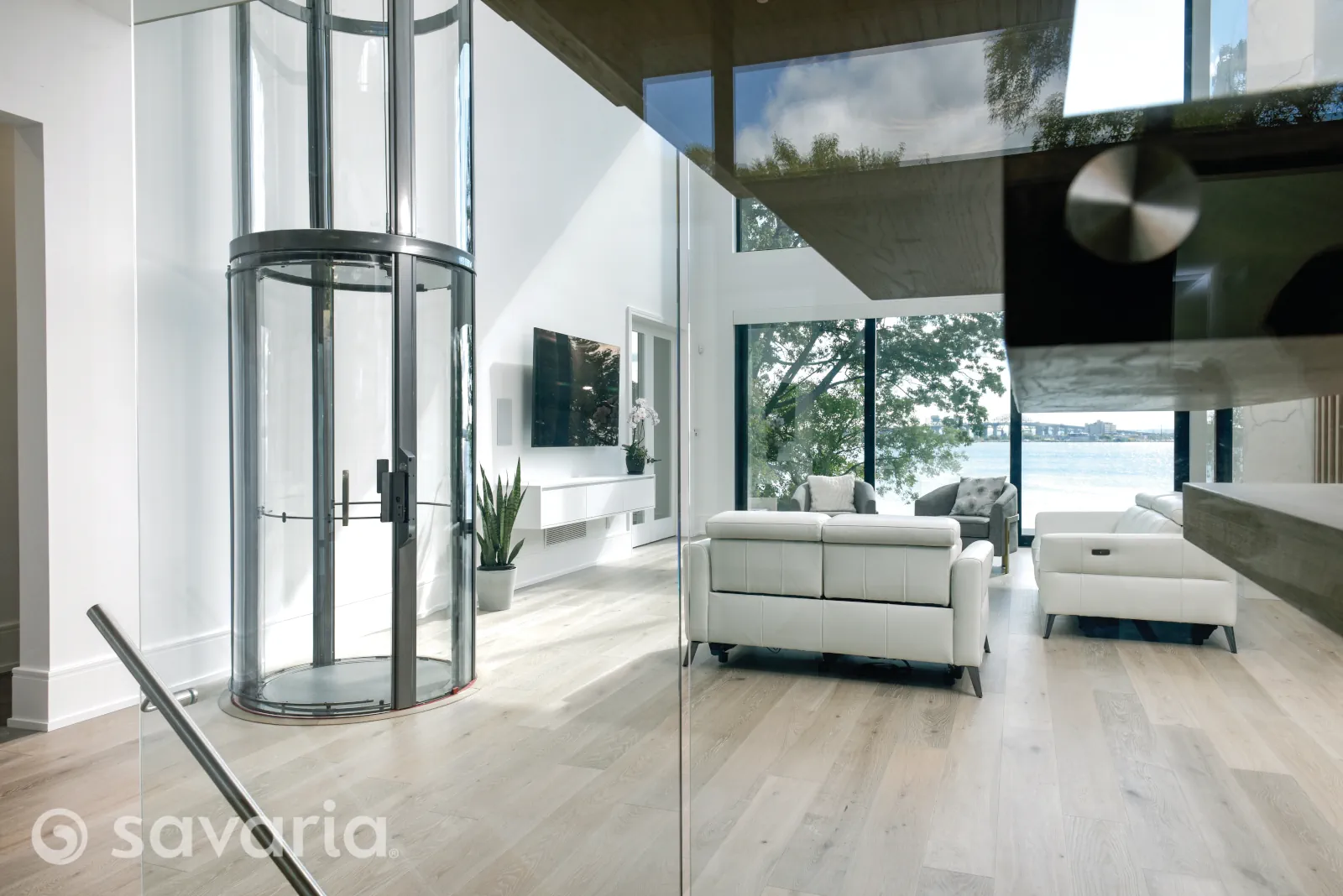As our population ages and demand for accessibility increases, the installation of home elevators is becoming a popular trend. They not only provide increased mobility for homeowners but also add value to the property. This informative and professional blog post will guide architects and contractors on home elevator integration and how to include an elevator in a new home project or renovation. We will outline the best practices and detail how partnering with Mobility123, a preferred partner for Savaria, can ensure that lifts are installed properly and within code compliance.
Assessing the Need for a Home Elevator
Before initiating a home elevator project, it’s crucial to determine the homeowner’s specific needs and preferences. Considerations may include the following:
- Mobility requirements of the homeowner
- Expected future changes in mobility
- The number of floors to be serviced
- Preferred elevator type (hydraulic, traction, or pneumatic)
- Budget constraints
Selecting the Appropriate Elevator Model
Once the need for a home elevator has been determined, choose the appropriate model. Several factors should be taken into account:
- Space availability
- Weight capacity
- Speed
- Noise level
- Maintenance requirements
Mobility123, a preferred partner for Savaria, offers an extensive range of residential elevators to meet varying needs and preferences. Savaria’s innovative elevator solutions include models that can be customized to fit any architectural style and requirement.
Planning for Accessibility
Designing a home with an elevator requires proper planning for accessibility. Evaluate the home’s layout and consider the following:
- Doorways and hallways should be wide enough to accommodate wheelchairs or other mobility aids
- Position the elevator to provide easy access to essential areas, such as bedrooms and bathrooms
- Consider installing grab bars, non-slip flooring, and appropriate lighting to enhance safety
Obtaining Necessary Permits
Incorporating an elevator into a home design requires obtaining the necessary permits. Work closely with local building authorities to ensure that the design meets all applicable codes and regulations. This may include:
- Meeting Americans with Disabilities Act (ADA) standards
- Securing required permits for electrical, mechanical, and building
- Ensuring compliance with local zoning laws and restrictions
Designing the Hoistway and Shaft
The hoistway and shaft are integral components of a home elevator installation. Careful planning and adherence to best practices are essential:
- Allocate sufficient space for the hoistway and shaft in the home’s design plan
- Ensure proper ventilation for the hoistway and machine room (if applicable)
- Plan for adequate structural support to accommodate the weight of the elevator
- Use fire-rated materials for the hoistway walls and doors
- Plan for a pit depth of approximately 8-12 inches
Customization Options
Savaria offers a wide range of customization options for home elevators, allowing architects and contractors to create a seamless integration with the home’s design. Some options to consider are:
- Customizable cab finishes, including wood, glass, or metal
- Variety of door styles and finishes
- Selection of control panel designs and fixtures
- Integration of smart home technology for added convenience and accessibility
Installing the Elevator
When it comes to installation and integration, partnering with a trusted and reliable company like Mobility123 ensures that the home elevator will be installed correctly and safely. Mobility123 employs expertly trained technicians and licensed elevator mechanics who adhere to the following best practices:
- Conducting a thorough pre-installation inspection to identify any potential issues
- Ensuring that all necessary permits are in place before commencing installation
- Following manufacturer guidelines and local codes during the installation process
- Testing and inspecting the elevator upon completion to confirm that it is safe for use
Ongoing Maintenance and Support
Regular maintenance is essential for the safe and efficient operation of a home elevator. Mobility123 offers comprehensive maintenance plans and support services to ensure the longevity and reliability of the installed elevator. This includes:
- Routine inspections
- Preventative maintenance
- Emergency repairs
- Technical support
Financing Options
Investing in a home elevator can be a significant financial decision for homeowners. Mobility123 works closely with clients to explore financing options and find the most suitable solution for their needs. This may involve:
- Securing grants or loans through government programs
- Collaborating with third-party financing companies
- Offering flexible payment plans to accommodate various budgets
Enhancing Home Value
Installing a home elevator not only improves accessibility and convenience but can also significantly increase the property’s value. Prospective buyers increasingly seek properties that accommodate changing mobility needs, making a home with an elevator a desirable asset in the real estate market.
Energy Efficiency Considerations
Modern home elevators are designed with energy efficiency in mind. Savaria’s product range includes models with energy-saving features, such as LED lighting and energy-efficient motors. By integrating these features into the elevator design, architects and contractors can contribute to the overall sustainability and eco-friendliness of the home.
Preparing for the Future
Incorporating a home elevator into a design plan demonstrates foresight and planning for potential future needs. As homeowners age or experience changes in mobility, a home elevator can help maintain independence and quality of life. Additionally, it can make the home more attractive to potential buyers with similar accessibility requirements.
Conclusion
Incorporating a home elevator into a design plan can significantly enhance the accessibility and convenience of a residence. By following the steps outlined above and partnering with Mobility123, architects and contractors can ensure a seamless and successful integration of an elevator into any home project or renovation. For more information on Mobility123’s range of Savaria products and services, visit their website or contact their team of experts today.


